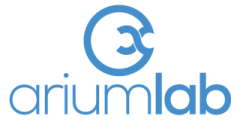Magnetic Racks
We design, develop and manufacture essential equipments for biomedical applications. Our high-performance magnetic separations racks are currently used in 40 different countries by well known companies. Our 0.2ml, 0.5ml, 1.5ml, 5ml, 15ml and 50ml magnetic separation racks, have a unique design and they have proven their reliability in the labs.
Magnet Plates
Levitation PlatesNew
ExtractorsNew
Bead DispensersNew
Cooling Blocks
Tube Holders
AutomationNew
Product SelectorFilters
Custom OrdersOEM
All Products
Nucleic Acid Extraction Importance

Nucleic Acid Extraction Importance
Emerging human and plant diseases are one of the major threats to global health and human civilization. Often, disease detection is delayed in developing countries or regions due to the shortage of skilled personnel and medical infrastructure. Moreover, even the healthcare systems of developed countries are facing an unprecedented challenge for laboratory-based disease detection during the ongoing COVID-19 outbreak. Therefore, the demand for portable, easy-to-use, and point-of-care (POC) diagnostic tests is increasing rapidly. [2]
Although there are many point-of-care test methods that each have their own place in providing neccessary and expeditious results, one of the widely used methods is nucleic acid based testing.
Nucleic acid is one of the most basic substances in life and has extremely important biological functions. It mainly stores and transmits genetic information which in turn, helps detect genetic changes that may be associated with certain health conditions. [3]
Nucleic acid–based POC disease diagnosis comprises three main steps: (a) on-site extraction and initial purification of nucleic acids; (b) amplification of the selected pathogen’s nucleic acid with technology appropriate for use in the field; and (c) visualization of the results. To date, most public and private research efforts have centered on the development of simple, reliable, and efficient methods of nucleic acid amplification. [1]
Nucleic acid is also the main material for storing, copying, and transmitting genetic information. Gene sequencing is of great significance in DNA damage research, gene therapy, mutation analysis, bacterial infection, drug development, and clinical diagnosis. Gene detection has a wide range of applications, such as environmental, biomedical, pharmaceutical, agriculture and forensic medicine to name a few. [3]
Nucleic acid extraction is one of the most fundamental steps in molecular biology applications and is a prerequisite for many experiments. The quality of extracted nucleic acid will directly affect the results of subsequent detection in experiments. [3]

One of the most widely used body fluids for the molecular diagnosis of human diseases is blood. Human whole blood consists of plasma (~55% of total blood volume), buffy coat (including white blood cells plus platelets, ~1% of total blood volume), and red blood cells (~45% of total blood volume). The extraction of nucleic acid from whole blood is an essential step for DNA/RNA-based diagnosis. [2]
In nucleic acid detection, the traditional method of extracting and detecting nucleic acid has lower efficiency, complex protocols, expensive instrumentation and requires highly skilled staff. Therefore, the automation of experiments has attracted great attention of researchers. Using magnetic particles to develop automatic nucleic acid detection technology, greatly simplifies the experimental process and improves the experimental efficiency and accuracy. [3]
Nucleic acids hold great significance in laboratory and on site testing of diseases. Already developed ways of testing can be improved further with the help of automatisation and novel extraction techniques, heightening the level of possibilities of nucleic acids for laboratory testing, disease prevention and diagnosis.
Sources
- Botella, J., R., (2022). Point-of-Care DNA Amplification for Disease Diagnosis and Management. Annual Review of Pythopathology. 60:1-20. DOI: https://doi.org/10.1146/annurev-phyto-021621-115027
- Paul, R., Ostermann, E., Wei, Q. (2020). Advances in point-of-care nucleic acid extraction technologies for rapid diagnosis of human and plant diseases. Biosensors and Bioelectronics. 169. 112592. DOI: https://doi.org/10.1016/j.bios.2020.112592
- Tang, C., He, Z., Lui, H., Xu, Y., Huang, H., Yang, G., Xiao, Z., Li, S., Liu, H., Deng, Y., Chen, Z., Chen, H., He, N. (2020) Application of magnetic nanoparticles in nucleic acid detection. Journal of Nanobiotechnology. 18, 62.https://jnanobiotechnology.biomedcentral.com/articles/10.1186/s12951-020-00613-6
